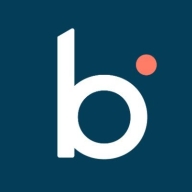

Boomi AtomSphere Flow and FlutterFlow are tools for application development with differing strengths. Boomi AtomSphere Flow seems to have the upper hand in enterprise integrations, while FlutterFlow is preferred for rapid mobile app development.
Features: Boomi AtomSphere Flow offers robust enterprise integration, extensive connectors, and a strong automation platform. FlutterFlow provides a rich set of visual development tools, allowing for quick design and deployment of mobile apps. Users appreciate Boomi’s comprehensive integration features but prefer FlutterFlow for mobile-specific development and faster iterations.
Room for Improvement: Users suggest Boomi AtomSphere Flow could enhance its UI complexity and documentation. FlutterFlow, while praised for ease of use, needs more advanced customization options and better performance optimization. Both products have areas to refine based on user feedback, but Boomi’s focus is on better documentation, whereas FlutterFlow requires more performance tweaks.
Ease of Deployment and Customer Service: Boomi AtomSphere Flow’s deployment is noted for its complexity but benefits from robust support. FlutterFlow is favored for its straightforward deployment, but its customer service could improve in responsiveness and depth. Boomi’s stronger support infrastructure contrasts with FlutterFlow’s ease of deployment, reflecting differing user priorities.
Pricing and ROI: Boomi AtomSphere Flow has a higher setup cost but delivers significant ROI through its enterprise capabilities. FlutterFlow offers competitive pricing and quick ROI for mobile app development. User reviews indicate that while Boomi is costlier, it’s justified for enterprise needs, whereas FlutterFlow’s pricing and ROI are more aligned with small to mid-sized app development projects.


Boomi Flow is a modern, cloud-native service for creating customer journeys and automating simple and sophisticated workflows that accelerate your business outcomes.
FlutterFlow is used for developing mobile applications quickly and efficiently, ideal for building prototypes, MVPs, and full-fledged applications without extensive coding experience. It supports cross-platform development, enabling simultaneous deployment on Android and iOS.
FlutterFlow's visual development tools and integrations streamline the app creation process, making it perfect for startups and developers looking to launch their apps faster. Its comprehensive drag-and-drop interface, pre-built components, and templates facilitate rapid app development. Integration with Firebase simplifies backend connections, and the robust documentation and tutorials support quick learning. Real-time collaboration features improve teamwork, enhancing the development experience.
What are the most important features of FlutterFlow?FlutterFlow can be particularly useful in industries that require fast app iterations, such as startups and tech companies. Its support for cross-platform development is beneficial for companies targeting both Android and iOS markets. The ease of use and comprehensive support make it an appealing choice for businesses looking to launch functional apps quickly, without extensive coding knowledge. Though improvements in stability, performance, customization, debugging, and customer support are needed, FlutterFlow's overall features present a strong front for efficient app development.
We monitor all Low-Code Development Platforms reviews to prevent fraudulent reviews and keep review quality high. We do not post reviews by company employees or direct competitors. We validate each review for authenticity via cross-reference with LinkedIn, and personal follow-up with the reviewer when necessary.